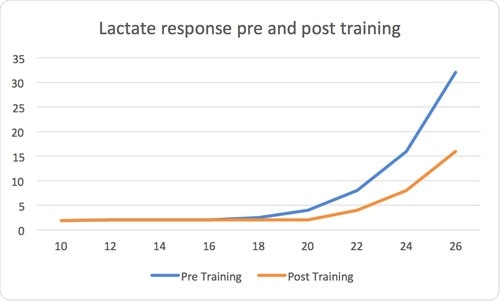
Image Credit: EKF Diagnostics
In clinical practice, lactate is a well-established tool for establishing diagnosis and prognosis in critically ill patients.1 It can be used to diagnose sepsis and can also help in monitoring post-surgical morbidity, post-cardiac event morbidity, post-transplant morbidity and to assess patients recovering from pneumonia.
Veterinary clinics are increasingly using lactate testing for prognosis and diagnosis in a number of clinical presentations.2 Fast, cost-effective and close-to-hand results are now available through the use of hand held lactate analyzers. These have been demonstrated to provide results that are comparable to those from laboratory-based lactate testing methods3.
Lactate Testing in Small Animals
Lactate is not an indicator of any particular disease. Rather, it is a useful measurement that, when taken in isolation, can help in treatment decisions and act as a guide to morbidity and/or the need to closely monitor specific patients.
For example, when considering morbidity or death, a normal lactate value (approx. 2.0 mmol l-1) in dogs is a far better predictor of survival than a high lactate value.

Image Credit: EKF Diagnostics
Lactate Testing in Equine Athletes
A normal consequence of exercise in horses is the accumulation of lactate in muscle cells and blood. At low exercise intensity, energy in the form of ATP is provided to fuel muscle activity through the aerobic metabolism of glycogen, glucose and fat. Oxygen levels will no longer be able to meet the ATP requirement as exercise intensity increases.
At this point, pyruvate is metabolized to lactate to fuel muscle energy requirements rather than pyruvate being used in the citric acid cycle in the mitochondria. Lactate, itself, can’t be used as energy by muscles, so it is transported to the liver in the blood where it is either used as an energy source or converted to pyruvate.

Image Credit: EKF Diagnostics
Blood lactate levels during exercise, therefore, provide an indication of anaerobic metabolism and, as such, are an indicator of muscle exertion. In conditioning athletes, be they human or equine, it is the “switch” from aerobic to anaerobic metabolism and the ability to maintain steady state lactate levels regardless of exercise intensity that is of interest.
Set exercise tests (SETs) or step tests are used to determine optimum training regimes and fitness gains. Usually, a SET is made up of a baseline lactate reading (t = 0) and various lactate measurements over 10 – 40 minutes either during steady state exercise (for example, treadmill running at a specific velocity) or during increasing exercise intensity (for example, treadmill running with increased velocity at set time points) followed by a recovery period. As shown in Figure 1, after a period of training, the same SET is performed again and the plots of the lactate levels are compared.
In a horse, the resting blood lactate concentration is approximately 1–1.5 mmol/L. This value does not change greatly from the resting value when it is running at low speeds. Lactate begins to build up in the blood when the horse accelerates over the level at which blood lactate is about 4 mmol/L. Often referred to as the anaerobic threshold, the speed at onset of accumulation of blood lactate (OBLA) or as VLa4.
VLa4 is the threshold workload at which blood lactate is maintained at 4 mmol/L. As shown in Figure 1, graphs of exercise speed (on the X axis) plotted against blood lactate concentration (on the Y axis) are inspected to derive this value. Lactate accumulates rapidly in the blood at speeds greater than VLa4.
There is an exponential relationship between velocity and blood lactate but when sufficient steps are used in the exercise test, the relationship can be described with two straight lines, with an obvious velocity at which the blood lactate begins to build up in blood.

Figure 1. Image Credit: EKF Diagnostics
Blood lactate concentrations are usually greater than 20 mmol/L after a race or intense training. Over a 1–2 h period after a race, the blood and muscle lactate concentration will gradually decrease. A normal result of fast work is acidosis of muscle and blood. This is rapidly reversed by the metabolism of the horse.
Training can result in lower blood lactate concentrations at the same work speed as demonstrated by many studies of horses trained on treadmills and on racetracks. The horse can work at a higher speed/intensity without accumulating lactate. Increasing stamina with training can be measured through repeated testing of the blood lactate relationship with velocity. Changes in fitness through the training program can also be monitored through VLa4measurements taken every 2–3 weeks.
Capillary Blood Sampling
The method for taking capillary samples in humans has been described by EKF on their website. The same basic principles apply with horses except that lancets should be larger (21G, 7 mm) and their fur will need to be shaved at the sample site. As detailed by Kobayashi (2007), the central region of the left neck should be used for the capillary puncture site.
An area approximately 1 cm2 should be shaved and disinfected with 50% ethanol in water to wash off dirt before exercise. After exercise, sweat should be removed using distilled water and the shaved site punctured with a 21G 7 mm long lancet. The initial drop of blood should be wiped away and the second drop used to take the lactate sample.
References
- Singer et al 2016 JAMA 315 801-810; Shankar-Hari et al 2016 JAMA 315, 775-787; Vincent et al 2016 Critical Care
- eg Sharkey & Wellman 2015 and Table 1
- Di Mauro & Schoeffler 2016; Acinero et al 2007; Karagiannis et al 2013
About EKF Diagnostics
EKF Diagnostics is a global medical diagnostics business with a long history in point-of-care testing and central laboratory manufacturing. Our products have a hard earned reputation for ease of use, reliability and accuracy.
Our core focus is the Point of Care market with over 80,000 haemoglobin, A1c, glucose and lactate analyzers in regular use in more than 100 countries running more than 50m tests every year.
Our range of HbA1c analyzers and glucose analyzers are used in GP surgeries, sports clinics, and diabetes clinics. They deliver fast and reliable results that provide both practitioner and patient with the information they need to make clinical or lifestyle decisions in minutes.
EKF Diagnostics offer the largest range of hemoglobin and hematocrit analyzers on the market, giving physicians and specialists a choice of product with different methodology, measurement speed, connectivity and price options. Our aim is to make blood donation and anaemia screening easier, more affordable and more accessible than ever before.
The EKF Maternal & Women’s Health Point of Care range aims to improve healthcare outcomes for women and children by providing physicians with a suite of products covering pregnancy testing, anaemia screening, fetal scalp lactate testing and post birth creamatocrit measurement.
EKF Diagnostics is also a global manufacturer of central laboratory products including Stanbio Chemistry reagents, benchtop laboratory analyzers, rapid tests and centrifuges. Our chemistry reagents can be used on the majority of analyzers found in hospital laboratories around the world.
The ordinary shares of EKF Diagnostics Holdings plc are traded on the AIM market of the London Stock Exchange.
Sponsored Content Policy: News-Medical.net publishes articles and related content that may be derived from sources where we have existing commercial relationships, provided such content adds value to the core editorial ethos of News-Medical.Net which is to educate and inform site visitors interested in medical research, science, medical devices and treatments.